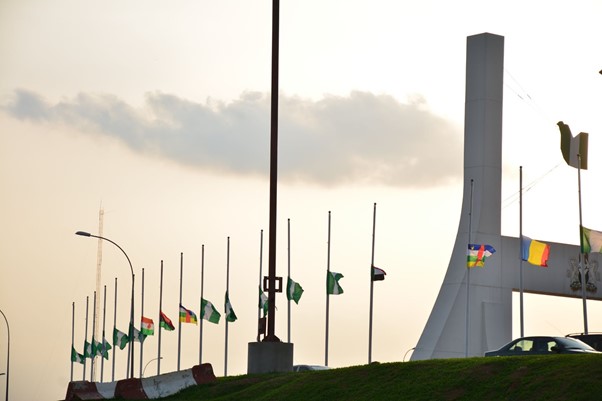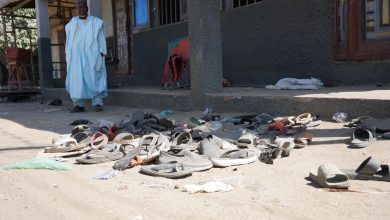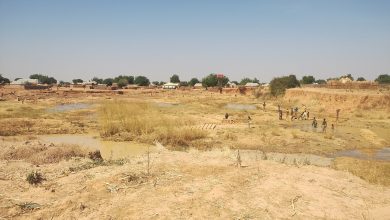How Residents Of Kaduna Community Took Chief Of Army Staff Plane Crash
On Friday, May 21, a military Beachcraft 350 carrying the Chief of Army Staff and 10 others, including his principal officers, personal aides and the crew, crashed at Kosoro, a village close to the Kaduna Airport. In this report, HumAngle looks at how the incident affected residents in the surrounding communities.

Until about 6 p.m. WAT on May 21 when the plane crash involving the Chief of Army Staff happened, that Friday was like every other day for Yakubu Musa of Kosoro village.
The insecurity his village and its sister communities around the Kaduna International Airport are immersed in, has created a ‘new normal’ characterised by gun-wielding terrorists who kidnap in this axis of Igabi Local Government Area (LGA) of Kaduna State.
The villages and hamlets around the airport are: Kosoro (in the vicinity of which the plane crashed), Sabonbirni, Afaka, Bauta, Rubu, Sabongida, and a few other hamlets.
The residents of these communities have become emotionally hardened from the activities of terror gangs that they appear to have ceased to be scared by them. They feel, with what they describe as the most-frightful insecurity situation, that no paranormal incident happening in the vicinity is startling enough to rattle them.
Majority of the residents were, therefore, not startled by the military plane crash of that fateful Friday, which re-echoes the history of military plane crashes in the country over the decades and its consequences.
Residents told HumAngle that the crash seemed different only because of the death of the country’s Army Chief and eight other officers amidst a torrential rain and windstorm, and then the growing hullabaloo about divergent causes.
However, the residents of the communities are divided on the cause of the crash.
“For majority of us in these villages, there was nothing startling or frightening about the crash,” Yakubu Musa, a commuter-vehicle operator, recalled, continuing, “in fact majority of us, right from Rigachikun to Afaka, did not even know of any plane crash until we heard it in the news.”
He continued, “it happened in the vicinity of my village, but the majority of us did not notice it while it was happening because there was a wind and rainstorm that day between 5 and 7 p.m.”
Musa said it was when they heard the argument that the plane could have been bombed, “which some of us see as plausible, although we were initially convinced that it was caused by the windstorm.”
Ibrahim Alaramma of Bauta recalled that some of the residents of Sabongida, Rubu and Bauta noticed the plane rattling in the turbulent weather shortly before it crashed.
“In spite of the storm, one of my passengers on my way from Sabonbirni to Rigachikun, said he noticed the plane was in trouble but we did not notice exactly when and how it crashed,” he recalled.
Alaramma added that he was more inclined to believe that the crash was caused by the turbulent weather. “I had a very poor view of the road due to the storm; in fact, I was lucky to have reached Rigachikun safely.”
“With that weather, I still believe nothing could have been the cause of the crash other than the storm. if it were bombed or the accident happened by some mischief, from what we have so far learnt about air accidents, the plane would have been shattered to pieces even before crashing,” he said.
But Tijjani Usman of Sabonbirni, was more critical about the cause of the crash.
“Yes there was a windstorm and rainfall, which could normally have caused the crash,” he said, and argued further that “what perplexed us was why the plane refused to land at the Air Force wing of the airport, and was told to divert to the main airport.”
“Why did it have to be the Chief of Army Staff? If it were the Chief of Air Staff, would he have been diverted to the main wing from the Air Force wing manned by his staff?”
He argued that the main wing was ill-equipped for any prompt rescue in such situations, because flights were not regular there.
“This is why the bombing argument and the mischief angle to the accident sounds more credible to some of us but Allah knows best.”
A Sabongida resident, who did not want his name mentioned, however told HumAngle that what the communities are most concerned about is the persistent insecurity due to the activities of terrorists.
Support Our Journalism
There are millions of ordinary people affected by conflict in Africa whose stories are missing in the mainstream media. HumAngle is determined to tell those challenging and under-reported stories, hoping that the people impacted by these conflicts will find the safety and security they deserve.
To ensure that we continue to provide public service coverage, we have a small favour to ask you. We want you to be part of our journalistic endeavour by contributing a token to us.
Your donation will further promote a robust, free, and independent media.
Donate HereStay Closer To The Stories That Matter




